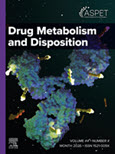引领药物研发与定量药理学
专业咨询
Drug Development and Pharmacometrics Leadership
Publication
发表文章
-
[Population Pharmacokinetics] Pharmacokinetic insights of onradivir in influenza treatment to inform pediatric dosing selection in clinical trial
2025-09-29
Abstract
Onradivir (ZSP1273) is a novel antiviral agent with broad-spectrum activity, favorable pharmacokinetics, and potential for treating influenza virus infections. This study developed a population pharmacokinetic model to evaluate the impact of factors on onradivir pharmacokinetics, explore exposure-efficacy and exposure-safety relationships, and inform pediatric dose selection in clinical trial. Six clinical trial datasets were pooled for population pharmacokinetic analysis. Covariates were subsequently screened. The impact of significant covariates on exposure was assessed through sim...... -
[Population Pharmacokinetics] Population Pharmacokinetics and Exposure–ResponseAnalysis of Serplulimab in Small Cell Lung Cancer Patients
2025-09-12
ABSTRACT
While PD-L1 antibodies have demonstrated efficacy in small cell lung cancer, the therapeutic benefits remain limited. To address this unmet medical need, serplulimab was developed as an innovative monoclonal antibody targeting PD-1. This study evaluated the pharmacokinetic (PK) properties of serplulimab and their relationship with efficacy and safety in patients with extensive-stage small cell lung cancer (ES-SCLC), using population pharmacokinetics (PopPK) and exposure–response (E–R) analysis to inform dose selection. Data from 1144 patients across eight Phase I–III clinical trials ...... -
[Population Pharmacokinetics] Alternative Dosing Regimens of Tislelizumab Using a Pharmacometrics Model-Based Approach.
2025-03-31
Tislelizumab 200 mg once every 3 weeks (Q3W) is approved for the treatment of multiple cancers. We used a model-based approach to propose three alternative dosing regimens, 150 mg Q2W, 300 mg Q4W, and 400 mg Q6W, with the aims of providing flexible treatment regimens compatible with background chemotherapy and/or reducing infusion visits. A previously developed population pharmacokinetic model was used to simulate pharmacokinetic exposure of the alternative regimens. Regulatory guidance on alternative dosing was used to define pharmacokinetics-based criteria. Alternative doses were selected by......
-
[Population Pharmacokinetics] Single- and multiple-dose pharmacokinetics and safety of the SARS-CoV-2 3CL protease inhibitor RAY1216: a phase 1 study in healthy participants
2025-01-31
Abstract
Coronavirus disease 2019, which leads to pneumonia, is caused by severe acute respiratory syndrome coronavirus 2 (SARS-CoV-2). RAY1216 is a 3C-like protease inhibitor that targets SARS-CoV-2. The aim of our study was to assess the pharmacokinetics (PK) and safety of RAY1216 in healthy volunteers. This was a randomized, placebo-controlled, double-blind study consisting of four components: a single ascending dose study, a drug-drug interaction study, a multiple ascending dose study, and a food-effect study. All participants were randomly assigned to receive either a single dose or mult...... -
[Population Pharmacokinetics] Alternative dosing regimens of tislelizumab proposed using modeling and simulation.
2025-01-27
Abstract
394
Background: Tislelizumab (TIS; BGB-A317) is approved for the treatment of multiple solid tumors, administered at 200 mg every 3 weeks (Q3W), and has demonstrated a flat exposure–response relationship across a wide range of doses. We evaluated alternative dosing regimens of TIS at 150 mg every 2 weeks (Q2W), 300 mg every 4 weeks (Q4W), and 400 mg every 6 weeks (Q6W) using a model-based approach with the aim of alleviating patient burden by providing longer dosing intervals and/or treatment flexibility compatible with background chemotherapy to meet the needs of patients and healt......

地址:上海市浦东区张杨路707号生命人寿大厦3201A
电话:400-102-3201
- 暂无相关记录!













